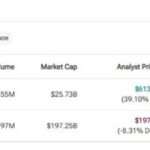If you haven’t started cashing out yet, you may not want to wait any longer. Yields are falling now that the Federal Reserve has begun its rate-cutting cycle, cutting the federal funds rate by half a percentage point on Wednesday. Still, there’s a record close to $6.3 trillion sitting in money market accounts, a popular place to park cash and earn yields of more than 5%, according to the Investment Company Institute. While total money market fund assets fell slightly in the week ending Wednesday, it was from institutional funds due to quarterly corporate tax payments, explained ICI Deputy Chief Economist Shelly Antoniewicz. Retail funds actually rose by about $5 billion. “Fed rate cuts are likely to support inflows into money market funds over the course of next year,” said Antoniewicz. While retail investors may slow investment, institutional flows tend to increase as money market fund yields lag fund rates, he said. “Yields are still pretty high, but it can be a big mistake to hold too much cash,” says certified financial planner Chuck Failla, founder of Sovereign Financial Group. The annual 7-day yield on the Crane 100 list of the 100 largest taxable mutual funds is 5.06%. Those yields are expected to decline, reflecting the Fed’s 50 basis point cut, over the next month. “Your asset allocation shouldn’t be driven by yesterday’s news, and it certainly shouldn’t be driven by what you think tomorrow’s news will be,” he said. “You’re setting yourself up for failure.” If you wait for rates to fall before moving your money into bonds, you’ll end up paying a higher price for the asset, he said. Bond yields move inversely to prices. However, considering the money you should keep in an emergency fund, it’s usually enough to cover six to 12 months of expenses, Failla said. That cash can stay in money market funds, high-yield savings accounts or certificates of deposit. If there are other cash needs next year, like tuition payments, that money should also be in the cash vehicle, he said. CD rates have fallen below 5%. This week Capital One and Marcus both lowered their annual percentages on one-year CDs, according to Wells Fargo’s rate tracker. Bread Financial remains top, with a one-year CD at 4.9% APY. Where to park your excess cash Kathy Jones, chief fixed-income strategist at the Schwab Center for Financial Research, has been advocating for the duration of the past year. After hovering around 5%, the yield on the 10-year Treasury is currently around 3.7%. “It’s still not a bad place to be if you want to be in a super-safe allocation,” he said. That said, they choose investment-grade bonds for the money they want to spend over the next five to 10 years. Investors can earn more than 4% for the bond, which is expected to last for six years, he said. For wealthy investors, Jones recommends municipal bonds, which are exempt from federal and, in some cases, state taxes. They have high credit quality and are good for those who have more time, since the yield curve is somewhat upward sloping, she said. “Unless you think the tax rate is going to drop significantly … that’s a staple in a fixed income portfolio for people in high tax brackets,” Jones said. Failla always advises clients to have buckets in their portfolio based on their time horizon and cash flow needs. The money needed for one to two years is generally in high-quality, short-duration corporate bonds. About 15% can be in high-quality, value-oriented dividend stocks. The bucket for three to five years has about 70% in fixed income, with a high amount of bonds added that have a duration of less than five years. They will put more into high yield, as well as personal credit, in the six to 10 year fixed income category. For 10 years and more, the portfolio is more aggressive and heavily tilted towards equities, although Failla also includes high-yield bonds, unconstrained bond funds and personal loans. However, you can achieve diversification by only investing in core bond funds, Jones said. “It can be challenging to try to build your own portfolio,” he says. “You need enough money to buy enough bonds to get diversification. With mutual funds, every dollar invested provides a certain amount of diversification in the portfolio.”
Search
Have an existing account?
Sign In
© 2022 Foxiz News Network. Ruby Design Company. All Rights Reserved.




